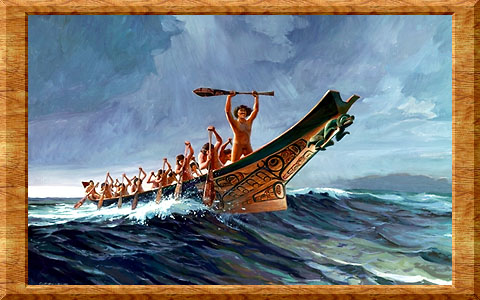
Original oil 18" x 24" by Gordon Miller © 1987
Mainly restricted to the sea by the steep, rugged and nearly impenetrable coastline, the Native people on the shores of British Columbia and Alaska developed a rich and unique maritime culture. Their artistry and skill reached a peak in the magnificent dugout canoe.
From short fishing trips to extended voyages of hundreds of miles, these canoes were essential to their survival. Carved and hollowed from a single cedar log, they were made in sizes from six to sixty feet. The largest, usually elaborately painted, were maintained for ceremonials or warfare, and could carry up to 40 people and two tons of freight. Their beauty of form, decoration and function were unequalled by any Native watercraft in the world.
The Haida were the acknowledged canoe-makers and the "Northern" type they developed were prize trade items. This tradition is today being revived, as witness the magnificent cedar canoe built by Bill Reid and his fellow Haida canoe builders for Expo 86 in Vancouver.
The canoe pictured here was carved by the Haida prior to 1853 in the Queen Charlotte Islands. It is 64 feet long and in the collection of the American Museum of Natural History.